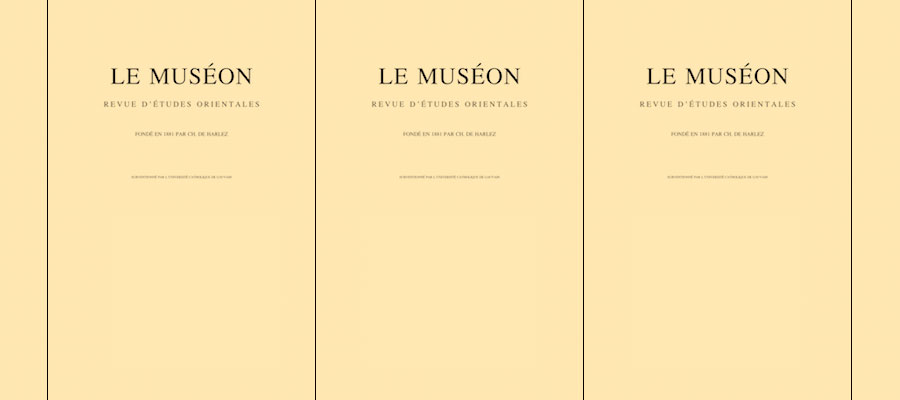Le Muséon, volume 136, issue 3-4 (2023).
CONTENTS INCLUDE
The Egyptian Sanctus and the Apse Iconography of the Red Monastery Church: The Early Use of the Sanctus in the Shenoutean Federation
Nathan P. CHASE
Scholars have traditionally believed that the Egyptian Sanctus, as epitomized by the anaphora of St. Mark, was primarily shaped by Origen’s exegesis of Isa 6. However, recent work by Mary Farag has pointed to the possible early influence of merkavah mysticism on fourth/fifth century Egyptian texts like the anaphoras of St. Thomas (THS) and the anaphora contained in the Barcelona Papyrus (BARC). This influence can especially be seen in the unique throne or chariot imagery used in the Pre-Sanctus of these texts. THS is preserved in the Great Euchologion of the White Monastery, part of the Shenoutean Federation. While not preserved in the Great Euchologion, BARC is thought to have circulated in monastic centers in Upper Egypt as well. Adding further support to the possible merkavah underpinnings of these texts is the second phase apse iconography from the Red Monastery, dated to 500-550 CE. The iconography depicts Christ enthroned, surrounded by the many-eyed wings of the four living creatures and on the wheeled chariot of Ezek 1. This evidence, alongside the writings of Shenoute, may further bolster claims that merkavah mysticism exerted a significant influence on the Egyptian Sanctus, particularly in Upper Egyptian monastic centers like the Shenoutean Federation, in the fourth through sixth centuries.
Notes sur les interventions de Phocas bar Sergius dans sa traduction des Scolia de Jean de Scythopolis au De divinis nominibus
Alberto NIGRA
Between the end of the seventh and the beginning of the eighth century, Phocas bar Sergius translated into Syriac the Greek Scholia of John of Scythopolis on the Corpus Dionysiacum (532-544/545). This translation is not only essential in order to recognize John’s specific contribution among the Greek commentaries on the writings of the Pseudo-Areopagite, especially when compared to the later additions of Maximus the Confessor and other scholiasts, but it also helps to reveal the numerous interventions of Phocas himself, as was already underlined in 1977-1978 by Strothmann in relation to the marginal notes on De ecclesiastica hierarchia IV. The aim of this article is to analyze some of the interventions of the Syriac translator – omissions, changes, additions – in his version of the Scholia on De divinis nominibus, as it is conserved in the MS Brit. Libr., Add. 12151 (Wright 625). In this way, it will be possible to identify some specific preoccupations of Phocas, including those of a terminological and doctrinal nature.
